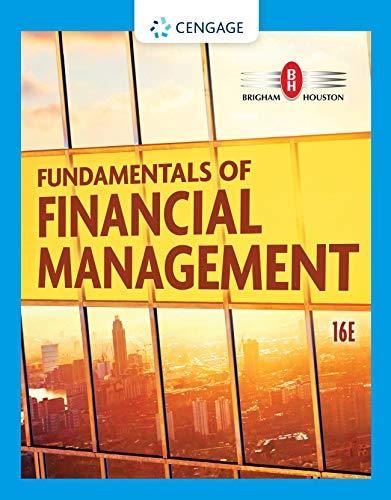Carlisle Industries is trying to determine its optimal capital structure, which now consists of only common equity.
Question:
Carlisle Industries is trying to determine its optimal capital structure, which now consists of only common equity. The firm will add debt to its capital structure if it minimizes its WACC, but the firm has no plans to use preferred stock in its capital structure. In addition, the firm’s size will remain the same, so funds obtained from debt issued will be used to repurchase stock. The percentage of shares repurchased will be equal to the percentage of debt added to the firm’s capital structure. (In other words, if the firm’s debt-to-capital ratio increases from 0% to 25%, then 25% of the shares outstanding will be repurchased.)
Carlisle is a small firm with average sales of $25 million or less during the past 3 years, so it is exempt from the interest deduction limitation. Its treasury staff has consulted with investment bankers. On the basis of those discussions, the staff has created the following table showing the firm’s debt cost at different debt levels:
The firm has total capital of $5 million and 200,000 shares of common stock outstanding.
Its EBIT is $500,000 and will not change if debt, at any of the levels shown in the preceding table, is added to the firm’s capital structure. Carlisle uses the CAPM to estimate its cost of common equity, rs. It estimates that the risk-free rate is 3.5%, the market risk premium is 4.5%, and its tax rate is 25%. Carlisle’s current beta, which is bU because it has no debt, is 1.25.
a. Calculate the firm’s interest expense, net income, shares outstanding, and EPS for each of the capital structures shown in the preceding table.
b. At what capital structure is EPS maximized, and what is the firm’s EPS at this capital structure?
c. Calculate the after-tax cost of debt [rd(1 - T)], beta (bL), cost of equity (rs), and WACC for each of the capital structures shown in the preceding table.
d. Considering only the capital structures shown, at what capital structure is WACC minimized and what is the WACC at this capital structure?
e. At what capital structure does the firm maximize shareholder value? Is this the same capital structure selected in parts b and d? Explain why it is, or why it isn’t the same.
f. As an analyst, what is your recommendation to the firm’s management regarding Carlisle’s capital structure?
Step by Step Answer:

Fundamentals Of Financial Management
ISBN: 9780357517574
16th Edition
Authors: Eugene F. Brigham, Joel F. Houston





